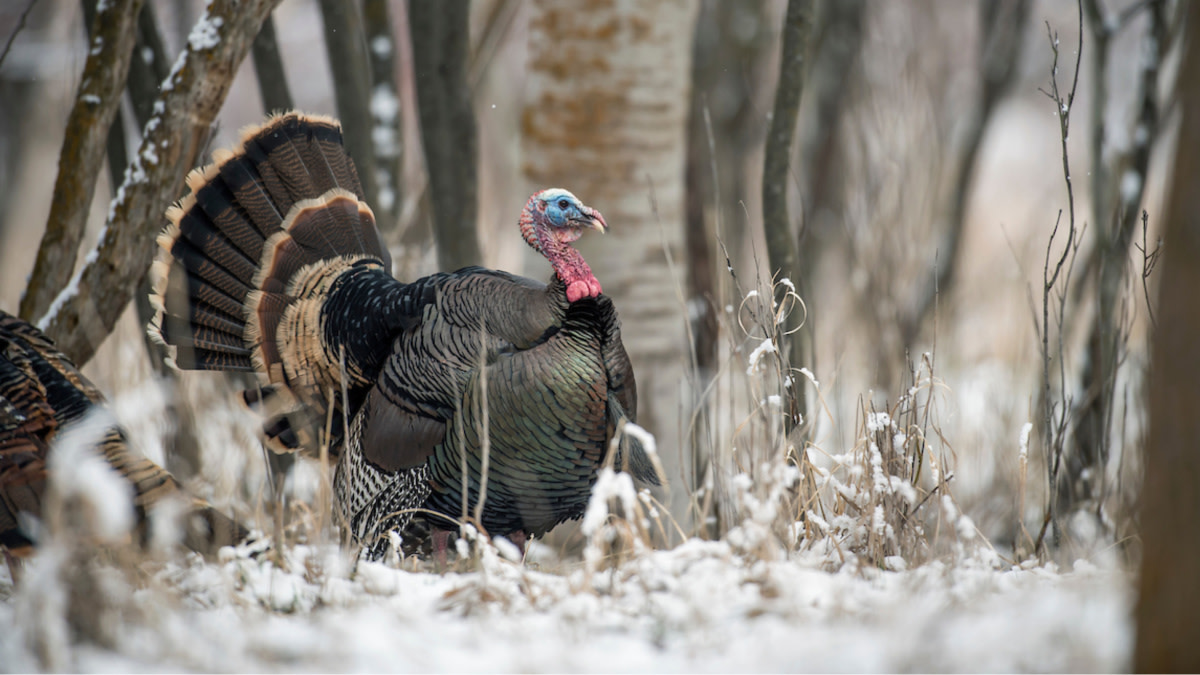
Humans have a weird way of fetishizing the weather. We take deep pleasure in bitching about it. This is ubiquitous across society in general but is often amplified in the case of hunters. Our outdoor enjoyment hinges on the whims of Mother Nature, which puts the weather foremost in our minds, our plans, and our gripes.
When it comes to spring turkeys, bluebird skies and seasonally appropriate temperatures are the dream scenario. If you’re a Florida hunter targeting osceolas in the palmettos, you probably won’t have to wait too long for the right weather.
For the early season hunter in the upper half of the country, it’s entirely possible—and likely—to have to deal with the opposite of dreamy conditions. Spring snowstorms happen, and while they tend to keep a lot of hunters out of the field, they don’t stop turkeys from trying to make young turkeys.
What the Flock? One of the great questions for astronomers is why the universe is expanding at such a quick pace. The Big Bang Theory explains it (sort of), but there is also the question of whether our observable universe is actually engaged in a multi-billion-year process of expansion and contraction, and that we are just figuring this out while in an expansion phase.
Take that thought and condense it down (way down), to the size of a wintering flock of turkeys. In January, for example, those flocks are locked into the most advantageous roosts and food sources. As spring progresses, more fresh food sources like emergent vegetation and insects come into play. Warmer, milder weather also allows the birds opportunity to roost in more spots. This expansion can be observed in real time if you scout enough.
While all of this is pretty simple, a single blizzard can usher those fractured flocks right back to their wintering density. This might happen multiple times if you hunt late March or any time in April throughout a good portion of the turkey’s range. Understanding what this means to your tactics is the key to tagging out when you could also be sledding with your kids.
And In This Corner… A few years ago I sat in a blind on public land in Nebraska all day. During that dark-to-dark sit, I watched a huge flock of birds ping-pong their way across a cut cornfield. It was early April, cold, snowy, and I felt like I was taking a master’s course on flocked-up turkey behavior. Those birds talked—and fought—all day.
Spring birds that are balled into a tight flock are intolerant creatures. This only gets worse when they start to split up, and then a snowstorm brings them back into close proximity. This seems to test their pecking order and makes them want to fight. I’ve seen this in my home state of Minnesota numerous times, as well. The worst was in 2018, where over the course of two days in mid-April we experienced a storm that dropped nearly 16 inches of powder. When this happens, it seems like toms are more likely to run out into the middle of a field to square off with a rival than they are to commit to a spread of nonthreatening dekes.
If you should be hearing frogs chirp but are dealing with ice fishing conditions, a full-strut decoy in (or close to) a food source is often the ticket. This can be enough to convince a boss gobbler to swing through with his harem, or to persuade a trio of 2-year-olds that they can win in a one-sided brawl. Set up where it should be visible to the nearby flock, then pair it with as many hen decoys as possible. After that, make some real noise. The goal is to piss off nearby longbeards by convincing them they are missing a real party.
Snow Sign If sitting tight near a carefully set spread isn’t your thing, use the powder to a different advantage. A flock of turkeys will leave plenty of fresh sign in the snow, which is all the intel you need to get close and call in a bird. My buddies and I have used this trick in multiple states. Not only does a pile of fresh tracks tell you where birds are going, but you can also infer where they came from and what they’ll do tomorrow.
This is key, because there is no animal more patternable than a turkey dealing with spring snow. Where the flock goes today, they’ll go tomorrow. Where they roost today, they’ll… you get it.
April and May snowstorms suck, but they don’t signal the end of good turkey hunting. They just require you to take the pulse of the flock and figure out how to get close. Once you do, you’ll experience dreamy turkey hunting in less-than-ideal conditions, which is far better than sitting out a hunt to wait on better weather.
Feature image via John Hafner.





